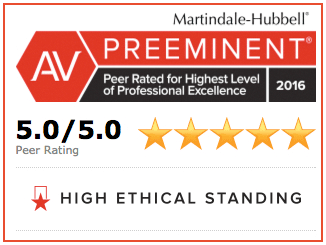How To Pick The Right Car For Safe Teen Driving

The Insurance Institute for Highway Safety (IIHS) estimates that of all parents who purchase vehicles for their children, 83 percent buy used cars. However, while such cars may have a price advantage over something brand-new, they may not be “good as new” in terms of safety. Here are some factors parents should consider for a safe, reliable, and economic teen driving from the New Jersey car accident attorney team at Rossetti & DeVoto, P.C.
Focus on Crash Test Ratings
Car companies and independent researchers conduct these tests for a reason: consumers demand them. For vehicles of every make, model, and year, there’s plenty of data out there on how well they protect drivers in crashes or collisions. The National Highway Traffic Safety Agency’s ratings are the industry standard. The IIHS has a list of recommendations directed specifically toward parents shopping for used cars. The Monash University Accident Research Centre in Australia even provides extensively researched Used Car Safety Ratings. Potential buyers can only benefit from knowing how well a car did – or how poorly.
 Get Something as New as Possible
Get Something as New as Possible
Even with used cars, newer models may be less affordable than older ones. However, they tend to be safer. Auto companies always strive to invent and incorporate more advanced safety technology into their latest vehicles. This means that a car released in any given year should be an improvement on those of previous years. After all, the safety features we take for granted now were once new. Though getting something newer may cost more than something older, you can bet it would be safer. However, if you can only afford an older vehicle, make sure you take it to your local mechanic, perhaps one works for a company similar to Steve Sorensen Mechanical, for example, so that you can be sure it is safe to drive.
More modern vehicles provide a lot more safety features than older ones. In turn, they relieve some of the stress when your teenager starts driving. With backup cameras, side-view sensors, anti-lock braking systems, and GPS, your teen’s vehicle will help protect them when behind the wheel.
Don’t Miss These Safety Features
Preferably, having more safety features in a car is preferable to having less. But, some consumers prefer a lower price for fewer features. The IIHS understands this. Still, they insist that any parent shopping for their new driver should find a vehicle with two specific ones. Side airbags, found in most cars from 2008 onward, can keep the driver’s head and chest safe in side-impact crashes. If your child had driving lessons in Manchester or somewhere else, then hopefully they were taught all the safety information they need to know to keep them from having crashes on the road. However, it’s important to remember that your child could be the safest driver on the road. But, this does not account for other drivers who may be driving recklessly.
More important than airbags is electronic stability control (ESC). ESC “helps drivers maintain control on curves and slippery roads.” Furthermore, it halves the odds of drivers perishing in accidents involving one vehicle. Certain older models come with SC, but in 2012 it became a required feature for “all but the heaviest vehicles.” The IIHS sees this and the side airbags as an excellent technology for keeping teen drivers safe.
As well as this it is vital that the car is undergoing regular maintenance. This is done so that safety can be constantly assured. Using websites like https://www.czokbrand.com can help people to focus on the specific areas of the car that need to be checked on and what the best products are to help with the maintenance process.
A Parking Spot
While you are considering all the above-mentioned points, do not forget that the car (which you will gift to your child) should have a proper place for parking. Why, you ask? Because parking vehicles in a public place could be dangerous (considering the climate conditions and human fallacies). Moreover, damages to the body of the vehicle could lead to extra expenses, which can be tiresome and frustrating. Therefore, teaching your kids to park in the right parking space, especially in a garage, could prove to be beneficial in the long run. That said, if you do not have a garage yet, it might be time to consider building one. However, before contacting a professional, it would be prudent for you to learn about different shed foundations (like gravel shed pad and concrete shed pad). Remember, a concrete foundation is necessary for protecting vehicles and reducing extra expenses.

Bigger is Better
Teens might prefer a small, sleek car over a bulkier van or SUV, but larger vehicles can protect drivers better. This may seem like common knowledge. But, size can make more of a difference in an accident than you might think. A 2013 University at Buffalo study revealed that when cars and SUVs collide, the car drivers tend to fare much worse. Even if the car has a higher safety rating than the SUV, the driver is still four times more likely to die in a crash between the two.
Parents prioritizing safety should pick something large. However, they should make sure to avoid buying something too large. There’s a noticeable difference between how small and big vehicles handle. So, teen drivers, new to the road, may have difficulty controlling something bulky.
Was Your Teen Driver Injured in a Crash? Call Rossetti & DeVoto, P.C. Today
Here at Rossetti & DeVoto, P.C., our lawyers are experts in car safety and the laws surrounding vehicle conduct. Contact us online today for a free consultation or call us at (844) 263-6260. Our New Jersey car accident attorney will review your case, speak to witnesses, examine who might be at-fault. And, help you understand the legal process when seeking compensation for your injuries.

 Get Something as New as Possible
Get Something as New as Possible







